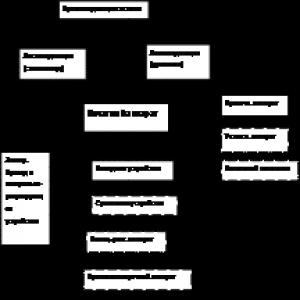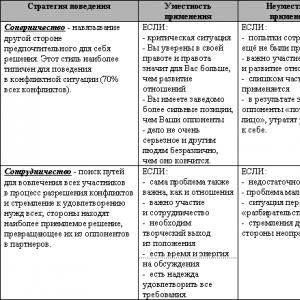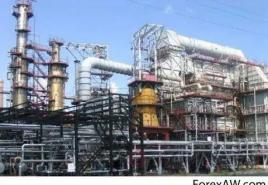Ambulance Driver Job Description. On the approval of the "rules for the work of field personnel on ambulances" What an ambulance driver should do
Job description - a document that describes all the duties of an ambulance driver, rights and responsibilities and simplifies the relationship between employees and employers. It is possible to do without it, since it is not mandatory under the Labor Code. Nevertheless, the presence of a detailed, well-written job description helps to optimize the workflow and eliminates controversial issues as much as possible.
General provisions
The job description of an ambulance driver 2020 begins with general provisions. It includes the following items:
- Appointment to the position of an ambulance driver and removal from it occurs with the help of the order of the general director;
- The ambulance driver also reports to either the director or the head of the department or subdivision;
- In his absence, he is replaced by another employee;
- The employee must have a driver's license of at least category B and have at least 2 years of driving experience.
Keep track of the work of an ambulance driver in the convenient Clinic Online program
Maintain employee records
Qualifications
For an ambulance driver, the main requirements are:
- category B and C rights;
- driving experience from 3 years;
- special training (ideally a secondary medical education, but this is not a prerequisite). If you have a special education, you do not need to have experience.
IMPORTANT
In the future it is planned tosecondary medical education a mandatory item, in addition to a driver's license and driving experience.
When working as an ambulance driver, you need to study the following information:
- traffic rules: including all the fines that are due for their violation;
- arrangement of an ambulance: its technical characteristics, principles of its operation and components, methods of their maintenance;
- operating rules: how to properly care for and maintain the machine in a consistently good condition for operation;
- data on malfunctions: why they occur, how and in what ways to determine this, what the consequences may be, repair;
- maintenance: basic information on how this is done.
https://ru.freepik.com
It is also important to take into account the current documents and be guided by them:
- provisions of legislative acts of the Russian Federation;
- acts of the company: mainly, this is the charter;
- orders and orders of superiors;
- provisions of the job description.
There are specific knowledge that the NSR driver must possess. He does not need to have a medical education, but minimal first aid skills are needed.
In particular, these are:
- rules for the use of medical equipment and instruments;
- safety precautions when using them;
- psychology of professional communication;
- basic knowledge of disaster medicine;
- sanitary and hygienic maintenance of the medical salon.
If necessary, the ambulance driver must be able to prepare equipment and tools for use, assist with the application of tourniquets and dressings, and ensure that all hygiene standards are observed, since sterility in medicine is an indisputable condition.
Equally important will be the ability to correctly choose the route to get to the patient as quickly as possible, and the willingness to help paramedics in carrying, loading and unloading patients.
Responsibilities
An ambulance driver must perform a number of job responsibilities. Their list is quite extensive and includes the following points:
- make sure that the car is in good condition;
- control the safety of the car, which implies constant supervision, the presence of an alarm and its use, blocking doors during trips;
- driving in compliance with traffic rules and maximum care so that there is no threat to the life and health of the team and patients, and the machine itself remains in good working order;
- monitor its technical condition and, if possible, troubleshoot it yourself;
- carry out maintenance at the right time in the service salon;
- keep the interior clean and take care of the car parts;
- put the car in a guarded parking lot or garage every day after work;
- Before traveling, draw up a detailed itinerary. The job description of the ambulance driver also suggests that the route must be coordinated with the management;
- then mark the route in the waybill, not forgetting various technical details: mileage, fuel consumption;
- exclude the use of alcohol, drugs and psychotropic substances in the workplace;
- Carry out specific tasks assigned by management as needed.

https://ru.freepik.com
This list can be supplemented by the fact that a person working in such a position must be prepared for an irregular work schedule, difficult patients and lack of time, as well as have unlimited reserves of patience and endurance.
That is why the job description of an ambulance driver will help not only the authorities in the selection of candidates, but also applicants to understand how ready they are for such hard work.
Rights
With a large list of duties, knowledge and level of responsibility, the rights of the driver of the SMP are significantly less. These include:
- obtaining any information necessary for the performance of duties;
- requirement from the brigade to fulfill all traffic rules;
- making a proposal to the management on improving the workflow and increasing the level of safety during the operation of the vehicle;
- requirement to comply with minimum suitable conditions in the process of work;
- making decisions within their competence and their implementation.
Responsibility
The ambulance driver is responsible for a number of issues:
- in case of failure to perform official duties, as well as when they are performed poorly or insufficiently professionally;
- with a careless attitude to orders, orders, instructions, if it concerns any confidential information, including trade secrets;
- in case of violation of labor regulations and labor discipline, violations of safety regulations, including fire safety.
conclusions
The job description is the most important document used to regulate the work process. You can download a sample above.
The main requirements are still specific skills - the ability to provide first aid and use medical equipment. It is also worth considering that if information about rights and responsibilities can be unified, then the section with duties should be approached as strictly as possible. The more clearly they are written, the less the likelihood of problems and the higher the degree of work optimization.
What is an ambulance driver?
Since ambulances began to use cars to arrive at the scene, a related profession has appeared - an ambulance driver. This profession is quite specific:
- The driver must know well the territory within which the ambulance team operates and be able to find the shortest path. After all, the life of a sick or injured person often depends on how quickly doctors and paramedics arrive at the scene. Just as often, you need to get a person to the hospital as soon as possible. The choice of the route and the speed with which the transportation is carried out lies entirely with the driver.
- This person should not only be able to drive a car and, if necessary, repair it, but also provide emergency assistance. That is why a paramedic is often the driver (by 2020, it is planned to replace all ambulance drivers with paramedics).
- The ambulance driver is obliged, if necessary, to participate in the transfer of patients on a stretcher, which requires considerable physical strength.
All important features of the work should be reflected in the job description developed for this employee.
Don't know your rights?
What does the job description of an ambulance driver contain?
A job description designed for an ambulance driver usually contains the following parts:
- General provisions. It describes the required level of qualification of the employee, his subordination, requirements for work experience.
- Responsibilities assigned to the driver (more on them will be discussed later).
- Driver's rights. Although the ambulance driver has all the rights that are provided for by labor legislation, in this section it makes sense to indicate only those that are characteristic of a particular organization or not mentioned in the Labor Code of the Russian Federation. In particular, this often includes the right to professional development and to appeal to management with complaints and suggestions.
- Driver responsibility. Usually in this section we are talking about disciplinary (for violation of the legal orders of the management and failure to comply with the requirements of discipline), civil law (in terms of compensation for damage caused to the property of the enterprise or other employees), as well as administrative and criminal (for the commission of relevant misconduct or crimes) .
Qualification requirements for an ambulance driver
A person who wants to drive an ambulance most often has the following requirements:
- category B and C rights;
- driving experience of at least 3 years;
- special training in the field of emergency care or secondary medical education.
The latter is still rare, but in the future it is planned to replace professional drivers with nurses with a driver's license and driving experience. In the event that a person with a secondary medical education is taken to the position of a driver, there are no requirements for work experience in this area, since driving skills are required first of all. The conditions regarding the length of service as a driver remain in force.
Responsibilities of an ambulance driver
Driver responsibilities typically include the following:
- knowledge of traffic rules, car device, topography of the area, location of medical facilities;
- driving a car during on-call trips;
- maintenance of the car, refueling it with fuel and lubricants, execution of relevant documents;
- ensuring the safety of medical equipment installed in the entrusted vehicle;
- keeping the car interior clean, carrying out the necessary cleaning;
- elimination of minor faults that do not require the intervention of qualified auto mechanics;
- rendering assistance to medical staff during the transportation of sick and injured, carrying equipment and medical manipulations (application of splints, tourniquets, etc.).
- fulfillment of the orders of the doctor and paramedic, to which the driver is subject at the time of departure.
It is easy to see that working on an ambulance requires a fair amount of endurance and patience from the driver. The constant shortage of time, the working day of unlimited duration, not always adequate patients - all this leads to the fact that not everyone can cope with this work. With the help of a correctly drawn up job description, the management of a medical institution can not only select the necessary candidates, but also enable the job seeker to determine whether he can work as an ambulance driver when he reads the document.
When a person falls ill or even is on the verge of life and death, all his hopes are usually placed on doctors. It is important that the doctor has time to provide assistance - on time and professionally. However, in the case of an ambulance, sometimes words of gratitude should be expressed not only to the doctor, but also to the driver. After all, the timeliness of providing assistance to the patient directly depends on the proper performance of the duties of an ambulance driver.
Of course, doctors and ambulance drivers are not omnipotent and weather conditions, traffic jams or closed barriers in yards do not depend on them. However, their work is very responsible, because they save people's lives. Therefore, one cannot neglect the personality of the ambulance driver, whose duties, although not directly, are connected with the salvation of a person.
Ambulance Driver Job Responsibilities 2020
The duties of an ambulance driver are announced to the employee during an interview with the manager, and later, during employment, they are recorded in writing. It is clear that since the work is related to driving a vehicle, then without a driver's license of a certain category, they cannot hire a person.
Ambulance Driver Job Responsibilities 2020 are as follows:
- know traffic rules, addresses and location of medical institutions, arrangement of vehicles;
- carry out the management of vehicles in case of calls;
- service the car assigned to him, refuel fuel and lubricants, fill out waybills, etc .;
- ensure the safety of medical equipment with which the machine is equipped;
- help medical workers in helping patients - transport people, carry heavy medical equipment, perform certain medical manipulations (for example, apply a splint for a broken limb);
- follow other orders of doctors and paramedics during the departure.
Job description - a document that describes all the duties of an ambulance driver, rights and responsibilities and simplifies the relationship between employees and employers. It is possible to do without it, since it is not mandatory under the Labor Code. Nevertheless, the presence of a detailed, well-written job description helps to optimize the workflow and eliminates controversial issues as much as possible.
General provisions
The job description of an ambulance driver 2020 begins with general provisions. It includes the following items:
- Appointment to the position of an ambulance driver and removal from it occurs with the help of the order of the general director;
- The ambulance driver also reports to either the director or the head of the department or subdivision;
- In his absence, he is replaced by another employee;
- The employee must have a driver's license of at least category B and have at least 2 years of driving experience.
Keep track of the work of an ambulance driver in the convenient Clinic Online program
Maintain employee records
Qualifications
For an ambulance driver, the main requirements are:
- category B and C rights;
- driving experience from 3 years;
- special training (ideally a secondary medical education, but this is not a prerequisite). If you have a special education, you do not need to have experience.
IMPORTANT
In the future it is planned tosecondary medical education a mandatory item, in addition to a driver's license and driving experience.
When working as an ambulance driver, you need to study the following information:
- traffic rules: including all the fines that are due for their violation;
- arrangement of an ambulance: its technical characteristics, principles of its operation and components, methods of their maintenance;
- operating rules: how to properly care for and maintain the machine in a consistently good condition for operation;
- data on malfunctions: why they occur, how and in what ways to determine this, what the consequences may be, repair;
- maintenance: basic information on how this is done.
https://ru.freepik.com
It is also important to take into account the current documents and be guided by them:
- provisions of legislative acts of the Russian Federation;
- acts of the company: mainly, this is the charter;
- orders and orders of superiors;
- provisions of the job description.
There are specific knowledge that the NSR driver must possess. He does not need to have a medical education, but minimal first aid skills are needed.
In particular, these are:
- rules for the use of medical equipment and instruments;
- safety precautions when using them;
- psychology of professional communication;
- basic knowledge of disaster medicine;
- sanitary and hygienic maintenance of the medical salon.
If necessary, the ambulance driver must be able to prepare equipment and tools for use, assist with the application of tourniquets and dressings, and ensure that all hygiene standards are observed, since sterility in medicine is an indisputable condition.
Equally important will be the ability to correctly choose the route to get to the patient as quickly as possible, and the willingness to help paramedics in carrying, loading and unloading patients.
Responsibilities
An ambulance driver must perform a number of job responsibilities. Their list is quite extensive and includes the following points:
- make sure that the car is in good condition;
- control the safety of the car, which implies constant supervision, the presence of an alarm and its use, blocking doors during trips;
- driving in compliance with traffic rules and maximum care so that there is no threat to the life and health of the team and patients, and the machine itself remains in good working order;
- monitor its technical condition and, if possible, troubleshoot it yourself;
- carry out maintenance at the right time in the service salon;
- keep the interior clean and take care of the car parts;
- put the car in a guarded parking lot or garage every day after work;
- Before traveling, draw up a detailed itinerary. The job description of the ambulance driver also suggests that the route must be coordinated with the management;
- then mark the route in the waybill, not forgetting various technical details: mileage, fuel consumption;
- exclude the use of alcohol, drugs and psychotropic substances in the workplace;
- Carry out specific tasks assigned by management as needed.

https://ru.freepik.com
This list can be supplemented by the fact that a person working in such a position must be prepared for an irregular work schedule, difficult patients and lack of time, as well as have unlimited reserves of patience and endurance.
That is why the job description of an ambulance driver will help not only the authorities in the selection of candidates, but also applicants to understand how ready they are for such hard work.
Rights
With a large list of duties, knowledge and level of responsibility, the rights of the driver of the SMP are significantly less. These include:
- obtaining any information necessary for the performance of duties;
- requirement from the brigade to fulfill all traffic rules;
- making a proposal to the management on improving the workflow and increasing the level of safety during the operation of the vehicle;
- requirement to comply with minimum suitable conditions in the process of work;
- making decisions within their competence and their implementation.
Responsibility
The ambulance driver is responsible for a number of issues:
- in case of failure to perform official duties, as well as when they are performed poorly or insufficiently professionally;
- with a careless attitude to orders, orders, instructions, if it concerns any confidential information, including trade secrets;
- in case of violation of labor regulations and labor discipline, violations of safety regulations, including fire safety.
conclusions
The job description is the most important document used to regulate the work process. You can download a sample above.
The main requirements are still specific skills - the ability to provide first aid and use medical equipment. It is also worth considering that if information about rights and responsibilities can be unified, then the section with duties should be approached as strictly as possible. The more clearly they are written, the less the likelihood of problems and the higher the degree of work optimization.
1.GENERAL PROVISIONS.
The driver is a member of the ambulance team and is an employee providing driving ambulance transport.
The position of the driver of the ambulance brigade is assigned to the driver of vehicles of 1-2 classes, who has special training in the program for providing first aid to victims and trained in the rules of their transportation.
During the execution of the call, the driver of the ambulance team is directly subordinate to the doctor and paramedic of the OSMP team, is guided in his work by their instructions, orders and this regulation.
The appointment and dismissal of the driver from the position is carried out by the chief physician of the polyclinic, the structure of which includes the emergency department.
2.RESPONSIBILITIES
1. The driver of the ambulance team is subordinate to the doctor (paramedic) and follows his orders.
2. Monitors the technical condition of the ambulance, fills it with fuel and lubricants in a timely manner. Performs wet cleaning of the car interior as needed, maintains order and cleanliness in it.
3. Provides immediate departure of the brigade to the call and the movement of the car along the shortest route.
4. Contains in a functional state special signaling devices (siren, flashing light), searchlight, portable searchlight, emergency interior lighting, entrenching tool. Carries out minor repairs of equipment (locks, handles, belts, straps, stretchers, etc.).
5. Provides, together with the paramedic, the transfer, loading and unloading of patients and victims during their transportation. Provides assistance to medical personnel accompanied by mental patients.
6. Ensures the safety of property, monitors the correct placement and fixing of on-board medical devices.
8. Strictly follows the internal regulations of the emergency department, knows and observes the rules of personal hygiene.
9. The driver must know:
- Topography of the city.
- Location of health departments and institutions.
- Comply with the rules, regulations and instructions for labor protection;
- Properly apply collective and individual protective equipment;
- Immediately inform your immediate supervisor about any accident that occurred at work, about signs of an occupational disease, as well as about a situation that threatens the life and health of people.
3.RIGHTS.
The driver of the brigade of the ambulance department has the right to advanced training in the prescribed manner.
4. RESPONSIBILITY.
The Ambulance Officer is responsible for:
- Timely and high-quality performance of functional duties in accordance with the job description.
- The safety of medical equipment, instruments and sanitary equipment located in the ambulance.






